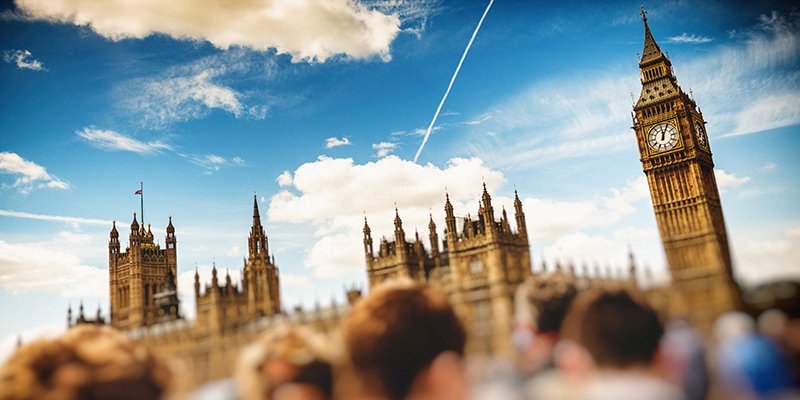Labour are on course to win a record-breaking number of seats
Keir Starmer continues to be on a record-breaking path, according to YouGov’s latest general election MRP model. Our central projection for the Labour party sits at 425 seat wins, up by 125 on their 2019 total, and up three seats since our first model two weeks ago.
While YouGov’s second MRP of the July 2024 election campaign shows little change for the Labour party compared to our first estimation, there is a notable drop in the number of estimated Conservative seats. According to our latest model, Sunak’s party would win just 108 seats if the election were being held today, down 32 from two weeks ago.
If this result were to come to pass, it would be the lowest number of seats won by the Conservative party in its near 200-year history of contesting British elections.
Another notable story in this update is the appearance of Reform UK on the projected seats tally. Fieldwork for the previous model was all conducted prior to Nigel Farage announcing his return to lead the party and stand as its candidate in the former UKIP seat of Clacton. Now, with all interviews conducted after this announcement, we have Reform UK ahead in no fewer than five constituencies.
Meanwhile, the Liberal Democrats have moved up by almost 20 seats to a total of 67, which would represent their best ever performance at a British general election. The Greens continue to be ahead in two constituencies, and Plaid Cymru are up by two since our last MRP.
The SNP have moved up as well, by three seats, closing the gap on Labour in Scotland who nonetheless are projected to remain the largest party north of the border.
In terms of implied vote shares, this model has Labour on 39% nationally, the Conservatives on 22%, Reform UK on 15%, the Liberal Democrats on 12%, the Greens on 7%, the SNP on 3%, Plaid on 1%, and others on 2%.
There is one important change to this model which will have affected the seat projections. Fieldwork for this model began after we had received and were able to programme in the actual candidates standing in each constituency into our survey. This means every respondent saw the specific names and parties of everyone standing in their specific constituency.
By mimicking the ballot in this way, we are able to pick up extra information such as incumbency effects, patterns of party contests, what happens when high profile independent candidates intervene in local races, and what voters tend to do when their first-choice party is unavailable.
This had a secondary effect of slightly stunting our fieldwork time, meaning that this model has a lower sample size than the previous. However, with a total of almost 40,000 interviews, we are still able to collect and model information from over 60 people per constituency on average.
Reform UK: Nigel Farage likely to win Clacton, with Reform in several other close contests
Reform UK have surged in the polls during the campaign with their headline voting intention figure reaching as high as 19% last week. Our latest model shows that this increased vote share could transfer into five seats – all gains from the Conservatives.
Clacton, where party leader Nigel Farage is standing, is where they are most likely to win a seat with Reform UK currently comfortably ahead of the second-placed Conservatives at 45% to 25%.
There are four others we have as tossups with Reform slightly ahead: Ashfield (where Conservative defector Lee Anderson is standing), Great Yarmouth, Louth and Horncastle, and Basildon and Billericay.
Reform UK are in second place in 127 seats, and while most of these are safe or likely Labour seats, there are four further tossups where they could snatch it from the party in first place. These include Barnsley North where Labour are just ahead, and three seats where both the Conservatives and Labour also have a chance of winning (South Holland and The Deepings, Havant, and Folkestone and Hythe).
Boston and Skegness, where former leader Richard Tice is standing, is currently leaning to the Conservatives with an eight point lead over Reform UK.
Lib Dems on course for their largest number of MPs ever
Our model has the Liberal Democrats winning a record high 67 seats – more than six times their 2019 tally and surpassing their 2005 record of 62 seats.
Based on 2019 nominal results, 57 of the seats are being taken from the Conservatives and three are gains from the SNP.
Our model suggests that the party will perform best in the South, taking 24 seats in the South East and 19 seats in the South West.
Lib Dem leader Ed Davey (who has served six terms in his Kingston and Surbiton seat) is set to welcome three new neighbours, doubling the current number of Lib Dem MPs in London to six. One to watch is Wimbledon, a seat dating back to 1885 where the Liberal Democrats have never won.
Outside of the South the party is set to win 18 seats, including long-term target seats in the North West like Cheadle and Hazel Grove which are swinging from blue to orange. Our updated model suggests that both constituencies are now deemed ‘safe’ Lib Dem territory.
SNP set to be pushed into second place in Scotland
According to our latest MRP Labour will become the largest party in Scotland by a margin of eight seats. Our seat totals have Labour taking 28 seats, the SNP 20, the Conservatives five and the Lib Dems four.
Even for an election with such a dramatic change in the composition of the House of Commons, the churn in Scotland is notable. Thirty two seats are changing hands according to our model, more than half of the total number of seats (57).
Scotland is also notably more marginal than England. Sixteen of the 57 seats are tossups – meaning that the winning party's lead is less than five points. In all these, the SNP are one of the two parties vying for the top spot, with Labour competing in ten, the Conservatives in four and the Lib Dems in two.
The two constituencies that were held by Alba MPs (Lothian East, and Cowdenbeath and Kirkcaldy) are estimated to be taken by Labour.
Greens expected to add a second seat, but aren’t close to winning a third
The Green Party is expected to secure two seats in the upcoming election, Brighton Pavilion and Bristol Central. The Brighton seat has been held by the Greens since 2010, and they are currently on course to take a majority of the vote (57%), with Labour following on a distant 28%. Bristol Central would be a Green gain from Labour, with the party currently on 50% to Labour’s 37%.
The Green Party is the runner-up in a further 39 constituencies, second to Labour in every instance except North Herefordshire where they compete with the Conservative party. They are not close in any of these seats, however, being on average 45 points behind the winning candidate.
Over half of the seats in which the Greens come second are located in London (22), seven are in the North West and five are in Yorkshire and the Humber.
Which seats are on a knife-edge?
Our latest model has 109 seats as toss ups – meaning that the winning party's lead is less than five points.
Sixty five marginal seats are contests between the Conservatives and Labour. Currently, the parties are on course to gain a near-equal share of these seats – Labour are in the lead in 32 seats and the Conservatives in 33 – but these seats are on a knife-edge and could ultimately fall more to benefit just one party.
Elsewhere, the Lib Dems are neck and neck with the Conservatives in 17 seats (which they currently lead in nine of). The Lib Dems are also in two tight fights with the SNP, both of which they are winning at the moment.
Five seats are two-way marginals between Reform UK and either Labour or the Conservatives, with Reform UK in the lead in three of these seats (Ashfield, Great Yarmouth, and Louth and Horncastle).
There are also five three-way marginal seats, all of which are contests between the Conservatives, Labour and Reform UK. Labour are in the lead in two of these seats (Bognor Regis and Littlehampton, and South Basildon and East Thurrock), the Conservatives in two (Havant, and South Holland and The Deepings), and Reform UK in one seat (Basildon and Billericay).
It’s worth noting that the margin of error varies from seat to seat. We provide upper and lower figures along with error bars on the interactive MRP map on our election hub.
The average error of a seat will increase when there are specific local factors at play that are difficult to fully account for in our model.
Key Conservative figures losing their seats
Many prominent Conservatives look likely to lose their seats in the coming contest.
Currently Tory ministers look set to lose to the Liberal Democrats in:
- Jeremy Hunt, Chancellor (Godalming and Ash)
- Alex Chalk, Justice Secretary (Cheltenham)
- Michelle Donelan, Science Secretary (Chippenham)
- Gillian Keegan, Education Secretary (Chichester)
- Michael Tomlinson, Minister of State for Countering Illegal Migration Secretary (Mid Dorset and North Poole)
The Lib Dems also look likely to take Theresa May’s vacated seat of Maidenhead, Dominic Raab’s former seat of Esher and Walton and resigning MP and Housing Secretary Michael Gove in Surrey Heath.
Senior Conservatives losing their seats to Labour include:
- Grant Shapps, Defence Secretary (Welwyn Hatfield)
- Mark Harper, Transport Secretary (Forest of Dean)
- David T C Davies, Wales Secretary (Monmouthshire)
- Steve Baker, Northern Ireland Minister (Wycombe)
- Johnny Mercer, Minister of State for Veterans' Affairs (Plymouth Moor View)
- Penny Mordaunt, Leader of the House (Portsmouth North)
- Mel Stride, Work and Pensions Secretary (Central Devon)
Our results also show close calls between the two main parties with Conservatives currently edging a win in:
- James Cleverly, Home Secretary (Braintree)
- Esther McVey, Minister of State without Portfolio (Tatton)
The impact of Labour is further evident by claiming seats of former prominent Tory figures such as:
- Boris Johnson, former Prime Minister (Uxbridge and South Ruislip)
- Liam Fox, former Defence Secretary (North Somerset)
- Iain Duncan Smith, former Tory leader (Chingford and Woodford Green)
- Jacob Rees-Mogg, former Leader of the House of Commons (North East Somerset and Hanham)
Separately, Caerfyrddin (Chief Whip Simon Hart) is currently leaning towards Plaid Cymru.
Meanwhile, further toss-ups are seen in:
- a SNP-Conservative contest in Dumfries and Galloway (Scotland Secretary Alister Jack)
- a Reform-Labour contest in Basildon and Billericay (Tory Party Chairman Richard Holden)
The Conservatives are reduced to a single seat in Wales
The Tories could be reduced to just one seat in Wales according to our latest data, just holding onto Montgomeryshire and Glyndwr (although this seat is a tossup with Labour).
Our previous MRP showed the Tories dropping to just two seats but based on current data they would also lose Brecon, Radnor and Cwm Tawe to the Liberal Democrats. This would be a first Westminster seat won at a general election in Wales for the Lib Dems since 2015.
Our latest figures show Labour winning 26 of the 32 seats under new boundaries. This would demonstrate a dramatic change in the political make-up of Welsh seats in Westminster: in 2019 the Conservatives won 14 out of 40 seats, just eight fewer than Labour.
Plaid Cymru are currently on course to win four seats: Ceredigion Preseli, Dwyfor Meirionnydd, Caerfyrddin, and Ynys Môn (though this last one is a tossup between Plaid and Labour).
Labour set to take record number of London seats, with Tories at risk of being pushed out of the capital entirely
Labour looks on track to dominate the capital, with Keir Starmer’s party projected to take 63 of the 75 seats up for grabs. This represents 84% of London’s seats going red, an unprecedented level in electoral history (the party won 77% of seats in 1997).
It’s also a positive showing for the Liberal Democrats as they are set to double the number of seats they hold in London (six).
However, a ‘total wipeout’ in London is a real concern for the Conservatives with this MRP suggesting the party is likely to secure only six seats, around a quarter of what they achieved in the previous election. All six of these seats are closely contested and five are ‘toss-ups’ where Labour are within five points.
Town and country: Labour dominate in both urban and rural seats
Historically Labour could be seen as a party of the industrial urban areas, while the Conservative appeal was greater in the countryside. However, the results of this MRP show Labour are now dominant in both kinds of places.
Labour are set to win 237 borough seats (constituencies which are predominantly urban) compared to only 26 for the Conservatives, while in county seats (predominantly rural areas) Labour are taking 188 seats to the Tories’ 83, with the Lib Dems taking a further 51.
Labour become the largest party in the South East, with the Tories at risk of falling to third place
According to our model, Labour is now the largest party in the South East with 41 out of 91 possible seats. Even during their 1997 landslide, Labour had still trailed the Tories in the South East on 22 seats to 54.
The Conservatives are currently set to keep just 25 seats in a region they have historically dominated, and are at risk of being pushed into third place by the Lib Dems, who are currently winning in 24 constituencies.
Labour likewise looks set to become the largest party in the South West on 22 seats of the 58 that are up for grabs. The Conservatives are pushed into third place, taking only 16 seats to the Lib Dems’ 19. Only two constituencies the Conservatives are set to win in the South West show a convincing lead for the party, while nine are tossups and could be further wins for Labour and the Lib Dems.
Across the South of England as a whole, excluding London, Labour are set to take 94 seats in comparison to the Conservatives’ 61. The Lib Dems aren’t too far behind on 50 seats, with Reform taking a further 3 and Green 2. In 1997, Labour took just 59 seats to the Conservatives’ 109.
With London included, Labour’s total seats across the South rises to 157, more than double that of the Conservatives on just 67. Again, the Lib Dems are chasing on 56 seats. In comparison, the race was a lot closer in 1997 with the Conservatives on 120 seats and Labour on 116.
No independent candidates win, although Jeremy Corbyn comes close in Islington North
It is wrong to say MRP models can tell us nothing about unusual seats - the model does take into account local responses, and with the release of full candidate lists we can prompt for independent candidates and candidates from smaller parties. Nevertheless, a big part of MRP is modelling behaviour based on people of similar demographics in similar seats, so these projections should be given a little less confidence than more "typical" constituencies.
The best performing Independent candidate in our model is Jeremy Corbyn, the former Labour leader standing in Islington North. Our model has Labour ahead, but on a fairly narrow margin over the independent candidates. Assuming the independent vote in the seat is almost wholly a vote for Corbyn, he could yet retain his seat.
Deselected MPs or candidates in other seats are doing less well. Our model is showing significant support for Faiza Shaheen in Chingford and Woodford Green, but she remains in third place and the seat still looks likely to go Labour. Leicester East is being contested by two of its former Labour MPs, but the model currently shows under 13% support for them combined. There is no significant support for former Tory MPs Andrew Bridgen and Julian Knight in North West Leicestershire and Solihull West & Shirley.
There is notable support for independent candidates running a pro-Palestine platform or Workers Party candidates, particularly in some of those seats where there is a large proportion of Muslim voters, including Birmingham Hall Green and Moseley, Dewsbury and Batley, Bradford West and Birmingham Ladywood. At this point though our model does not show any of them coming close to victory.
Labour’s vote share is down in seats with more Muslims, but it is likely to make little difference to the final result
Keir Starmer has taken a stance on the Gaza conflict that has angered many in the Labour party, and there has been some suggestion that this is losing the party Muslim voters, in particular to the Greens.
Our latest MRP projections show that this trend does seem to be playing out, but that it will have minimal impact on Labour’s seat tally.
In seats in England and Wales where the Muslim population stands at 20% or more, Labour are experiencing a six-point median vote share decline compared to 2019 notional results. Outside of these seats, Labour’s vote share has grown a median of six points.
The Greens are the main beneficiaries of this. In seats where the Muslim population is higher than 20% the Green’s vote share has grown by a median of eight points, compared to a growth of three points in all other seats.
Not that that does the Greens or anyone else much good in 2024 – Labour’s winning margins in heavily Muslim seats are still enormous. In Bradford West, the most heavily Muslim seat in the UK (59% of residents are Muslim) Labour’s vote share stands at 53%, more than 40 points ahead of any other party.
Of the 38 seats with a Muslim population of 20% or more, all are won by Labour, with a median winning margin of 37 points, and no seat being won by a margin of less than 14 points (Leicester East).
What do you think about a Labour landslide, the election campaign, and everything else? Have your say, join the YouGov panel, and get paid to share your thoughts. Sign up here.
Photo: Getty


















